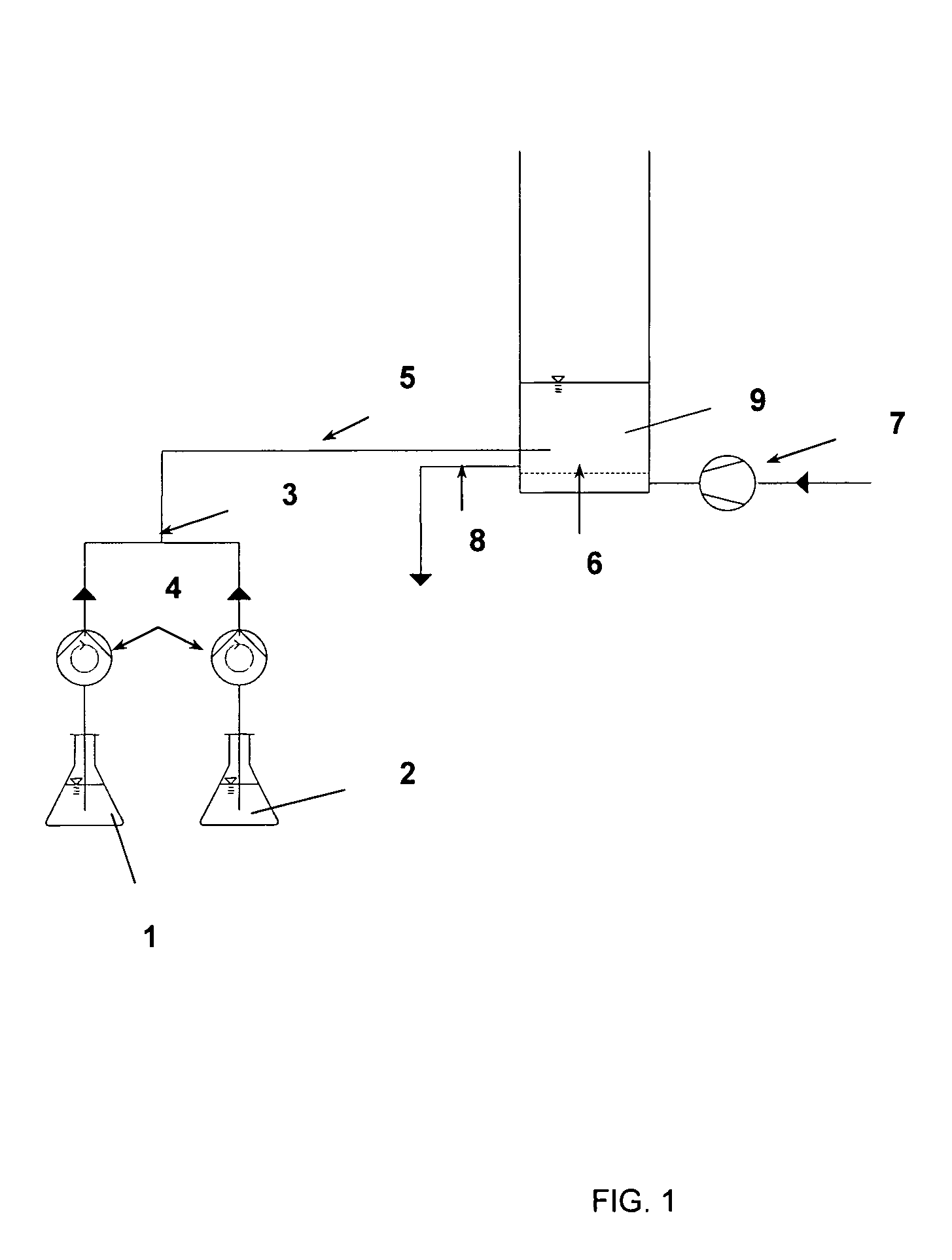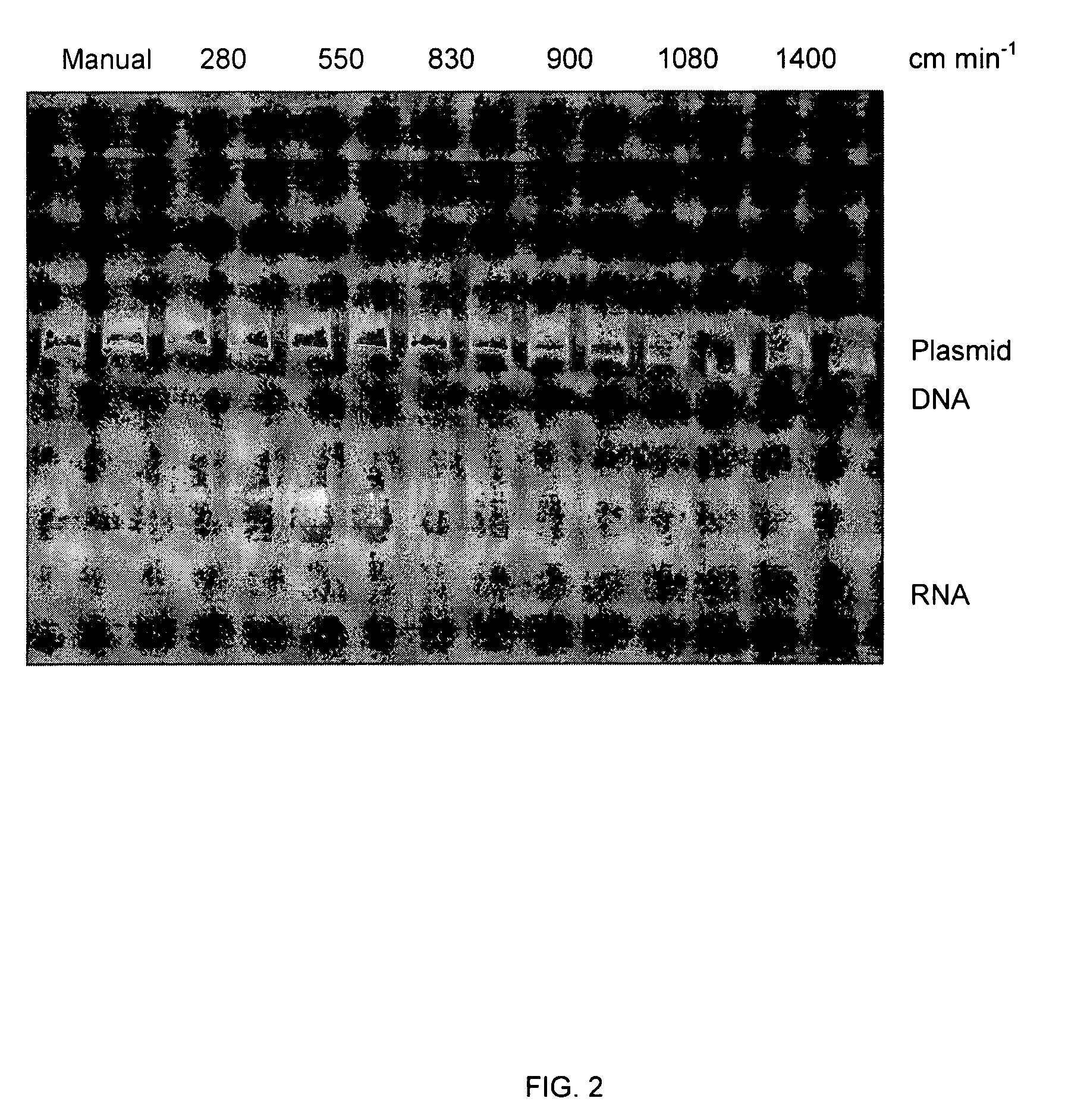Method for producing extra-chromosomal nucleic acid molecules
a nucleic acid and chromosomal technology, applied in the direction of sugar derivatives, biochemistry apparatus and processes, biochemistry apparatus, etc., can solve the problems of cellular component separation, low product yield, contaminated nucleic acids that are difficult to separate from the intended product, and process is not simply scalable, so as to achieve gentle and cost-effective separation, minimal equipment, and maximum reduction of shear forces
- Summary
- Abstract
- Description
- Claims
- Application Information
AI Technical Summary
Benefits of technology
Problems solved by technology
Method used
Image
Examples
example 1
Continuous Extraction of E. coli Cells Containing Plasmid Material
[0045]For the production of a plasmid-containing clear lysate, 200 g wet weight biomass of E. coli DH5α cells containing a 4.6 kb large high-copy plasmid are resuspended in a 2 L volume of resuspension buffer (50 mM Tris, 10 mM EDTA, pH 8.0). This cell suspension is mixed with extraction buffer by pumping identical volumes of extraction buffer (200 mM NaOH, 1% SDS) and cell suspension through tubes (diameter=10 mm) with a linear flow rate of 830 cm total per minute to a mixing point of both streams. A schematic illustration of this process is presented in FIG. 1. Disruption of the cells occurs within the tubing volume directly following the mixing point. The incubation time is at least 0.27 minutes.
[0046]The neutralization of the extracted cell suspension for the precipitation of the cellular components and subsequent non-rigid separation is performed in a simple column by a lateral injection of the cell extract into ...
example 2
Continuous Cell Extraction Using Different Flow Rates
[0048]For the production of plasmid-containing clear lysate, 200 g wet weight biomass of E. coli DH5α containing a 4.6 kb large high-copy plasmid are resuspended in 2 L resuspension buffer (50 mM Tris, 10 mM EDTA, pH 8.0). This cell suspension is mixed with extraction buffer by pumping identical volumes of extraction buffer (200 mM NaOH, 1% SDS) and cell suspension through tubes (diameter=10 mm) having different linear flow rates, namely, 280, 550, 830, 900, 1080 and 1400 cm per minute to a mixing point of both streams. A schematic illustration of this process is presented in FIG. 1. The cell extraction occurs within the tubing volume directly subsequent to the mixing point.
[0049]The neutralization of the extracted cell suspension for the precipitation of the cellular components and subsequent non-rigid separation is performed in a simple vessel via lateral injection of the cell extract into 2 L neutralization buffer (3 M potassiu...
PUM
| Property | Measurement | Unit |
|---|---|---|
| angle | aaaaa | aaaaa |
| diameter | aaaaa | aaaaa |
| diameter | aaaaa | aaaaa |
Abstract
Description
Claims
Application Information
 Login to View More
Login to View More - R&D
- Intellectual Property
- Life Sciences
- Materials
- Tech Scout
- Unparalleled Data Quality
- Higher Quality Content
- 60% Fewer Hallucinations
Browse by: Latest US Patents, China's latest patents, Technical Efficacy Thesaurus, Application Domain, Technology Topic, Popular Technical Reports.
© 2025 PatSnap. All rights reserved.Legal|Privacy policy|Modern Slavery Act Transparency Statement|Sitemap|About US| Contact US: help@patsnap.com


